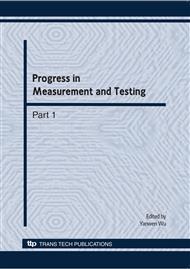p.207
p.211
p.216
p.222
p.228
p.234
p.240
p.244
p.250
Study on the Architecture for Agricultural Products Quantity Security Early Warning System
Abstract:
The early warning system for agricultural products quantity security requires storing and analyzing massive agricultural data. These data is of huge amount, heterogeneous, and has a wide-ranging source, thus the system should have an effective data collection mechanism. Based on all these requirements, how to construct an efficient early warning system has become a primary problem. In this paper, we focused our research on the architecture of the early warning system, and divided the system into application system, data collection system, and persistence system. Then we put forward reasonable architecture for each of them based on Web service and data warehouse. Finally, we emphasized on the discussion on the process of acquiring data from ministries based on the use of Web service adaptation technology. The proposed architectures are with fine flexibility and robustness, so they could be effectively used on the construction of the early warning system.
Info:
Periodical:
Pages:
228-233
Citation:
Online since:
May 2010
Authors:
Price:
Сopyright:
© 2010 Trans Tech Publications Ltd. All Rights Reserved
Share:
Citation:


